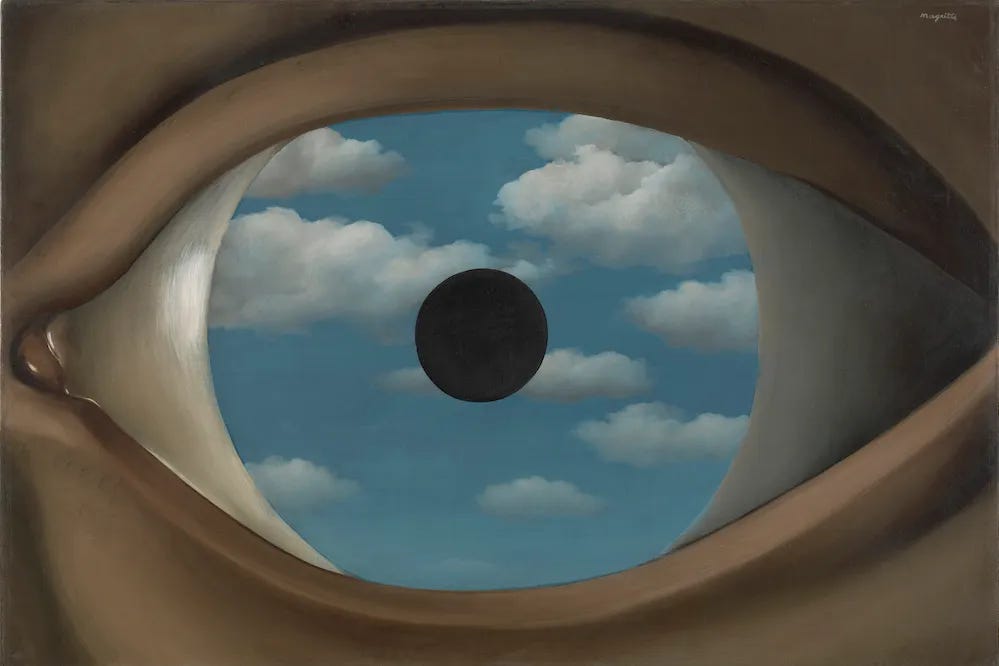The subject's symbolic identification always has an anticipatory, hastening character (similar to, yet not to be confused with, the anticipatory recognition of "myself" in the mirror image). As pointed out by Lacan in the forties, in his famous paper on logical time, the fundamental form of symbolic identification, i.e., of assuming a symbolic mandate, is for me to "recognize myself as X," to proclaim, to promulgate myself as X, in order to overtake others who might expel me from the community of those who "belong to X." Here is the somewhat simplified and abbreviated version of the logical puzzle of three prisoners apropos of which Lacan develops the three modalities of the logical time[1]: the head of a prison can, on the basis of amnesty, release one of the three prisoners. In order to decide which one, he makes them pass a logical test. The prisoners know that there are five hats, three of them white and two black. Three of these hats are distributed to the prisoners who then sit down in a triangle, so that each of them can see the color of the hats of the two others, but not the color of the hat on his own head. The winner is the one who first guesses the color of his own hat, which he signifies by standing up and leaving the room.[2] We have three possible situations:
-- If one prisoner has a white hat and the other two black hats, the one with the white hat can immediately "see" that his is white by way of a simple reasoning: "There are only two black hats; I see them on the others' heads, so mine is white." So there is no time involved here, only an "instant of the gaze."
-- The second possibility is that there are two white and one black hat. If mine is white, I will reason this way: "I see one black and one white hat, so mine is either white or black. However, if mine is black, then the prisoner with the white hat would see two black hats and immediately conclude that his is white; since he does not do it, mine is also white." Here, some time had to elapse, i.e., we already need a certain "time for understanding": I as it were "transpose" myself into the reasoning of the other; I arrive at my conclusion on the basis of the fact that the other does not act.
-- The third possibility - three white hats - is the most complex one. Here, the reasoning goes like this: "I see two white hats, so mine is either white or black. If mine is black, then any of the two remaining prisoners would reason the following way: 'I see a black and a white hat. So if mine is black, the prisoner with the white hat would see two black hats and would stand up and leave immediately However, he does not do it. So mine is white. I shall stand up and leave.' But since none of the other two prisoners stands up, mine is also white." Here, however, Lacan points out how this solution requires a double delay and a hindered, interrupted gesture. That is to say, if all three prisoners are of equal intelligence, then, after the first delay, i.e., upon noticing that none of the others are making any move, they will all rise at the same moment - and then stiffen, exchanging perplexed glances: the problem is that they will not know the meaning of the other's gesture (each of them will ask himself: "Did the others rise for the same reason as me, or did they do it because they saw on my head a black hat?"). Only now, upon noticing that they all share the same hesitation, they will be able to jump to the final conclusion: the very fact of the shared hesitation is a proof that they are all in the same situation, i.e., that they all have white hats on their heads. At this precise moment, delay shifts into haste, with each of the prisoners saying to himself "Let me rush to the door before the others overtake me!"
Keep reading with a 7-day free trial
Subscribe to ŽIŽEK GOADS AND PRODS to keep reading this post and get 7 days of free access to the full post archives.


